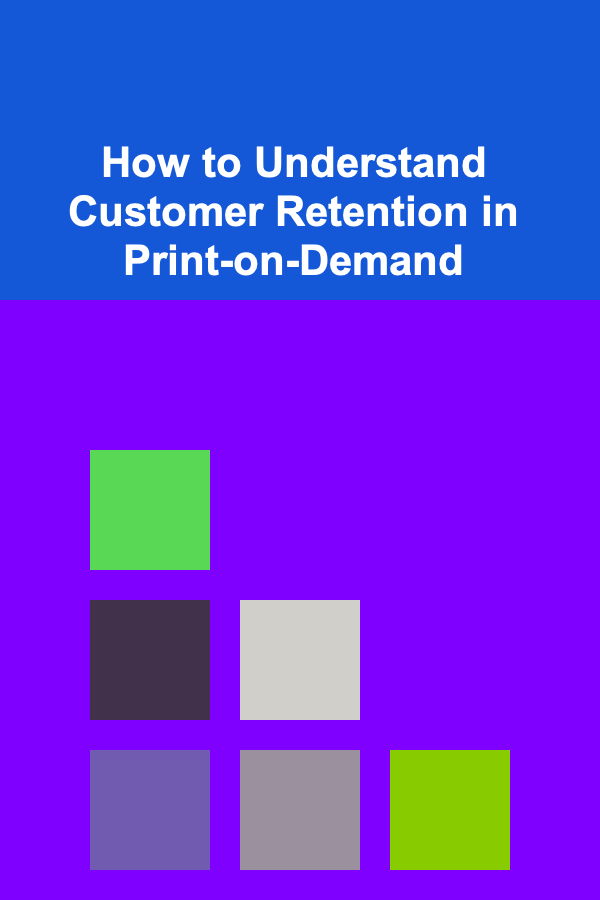
How to Build a Work Planner for Creative Professionals
ebook include PDF & Audio bundle (Micro Guide)
$12.99$10.99
Limited Time Offer! Order within the next:
Not available at this time

Creative professionals, whether designers, writers, musicians, or artists, face unique challenges in managing their time, tasks, and projects. Unlike traditional office work, creativity often follows an unpredictable rhythm that can make organizing work difficult. Yet, the need for a structured approach to stay on track, meet deadlines, and maintain productivity is essential. The right work planner can transform a chaotic workflow into a well-organized and motivating system.
In this article, we'll explore how to build an effective work planner tailored to the needs of creative professionals. We will delve into strategies for overcoming common productivity challenges, the essential elements a planner should contain, and the tools and techniques that can help optimize creative output without stifling inspiration.
Understand the Nature of Creative Work
Before diving into the mechanics of building a planner, it's crucial to understand the unique characteristics of creative work. Creativity is often non-linear, subjective, and highly personal. It can involve bursts of inspiration followed by long stretches of unproductive time. This makes traditional time management techniques, such as strict schedules, less effective for many creative professionals. However, even within this fluid nature of creativity, organization remains key to sustaining productivity and meeting deadlines.
Key Characteristics of Creative Work:
- Inspiration-Driven: Creativity often emerges in unpredictable bursts, making it difficult to follow a rigid timetable.
- Multiple Projects: Creative professionals frequently juggle several projects, which can vary in scale and complexity.
- Uncertainty in Output: The time it takes to complete a creative task is hard to predict, as the process can involve trial and error.
- Evolving Deadlines: Deadlines for creative projects can shift, and the scope of work may change as the project develops.
Recognizing these characteristics is the first step in building a work planner that works with, not against, the natural flow of creativity.
Identify Key Components for a Work Planner
A well-designed work planner for creative professionals needs to address both the need for structure and the flexibility that creativity demands. To achieve this balance, the planner should include several key components:
2.1 Project Breakdown
Creative professionals often work on projects with multiple phases and tasks. A good work planner should allow them to break projects down into smaller, manageable components.
- Project Overview: Each project should have a clear description, including goals, deliverables, and deadlines.
- Task Breakdown: Identify key tasks or milestones for each project. This allows for better focus on individual aspects of a project without feeling overwhelmed by the entire scope.
- Priority Levels: Assign priorities to tasks. Recognize that some tasks are critical, while others are secondary, helping to direct focus to what matters most at any given time.
2.2 Time Allocation with Flexibility
While rigid scheduling can be difficult for creative work, allocating time for different activities helps provide structure without stifling inspiration.
- Flexible Time Blocks: Instead of strict hours, use flexible time blocks. For example, instead of planning "9 AM to 10 AM: Write blog post," try "Morning Session: 1 Hour of Writing" or "Creative Block for Idea Development."
- Buffer Times: Allow for some open time between tasks to account for overflows, creative blocks, or unplanned changes in direction.
- Weekly Reviews: Allocate time at the end of the week to assess progress and adjust tasks for the following week. This helps creatives stay on top of deadlines while allowing flexibility in execution.
2.3 Goal Setting and Tracking
Clear goals are essential in any work planner, but for creative professionals, these goals should be both outcome-driven and process-oriented.
- Long-Term Goals: Set overarching goals that relate to career milestones, such as completing a series of paintings or publishing a book.
- Short-Term Goals: Break these down into smaller, actionable objectives like "Complete research" or "Create initial draft." The key is to focus on tasks that contribute to the bigger picture.
- Progress Tracking: Include ways to track progress on a task or project. This can be visual, such as a percentage completion chart, or through more narrative approaches like journaling or daily logs.
2.4 Reflection and Adjustments
Reflection is a critical part of the creative process, allowing for a deeper understanding of what worked and what didn't. The work planner should incorporate regular opportunities for this type of self-assessment.
- End-of-Week Reflections: Dedicate time each week to assess completed tasks, reflect on challenges, and think about what could have been done better.
- Creative Block Journal: When facing creative blocks, it can be helpful to keep a journal to note ideas, obstacles, and feelings about specific projects. This can help identify patterns and solutions for overcoming blocks.
- Feedback Loops: Include spaces for external feedback, whether from colleagues, mentors, or clients, so that adjustments can be made and improvements are clear.
Select the Right Tools and Mediums
Now that you have a clear idea of the key components needed in a creative work planner, the next step is choosing the tools and mediums for creating and maintaining it. The best tools for your planner depend on your personal preferences, workflow, and the type of creative work you do.
3.1 Paper Planners
For some creative professionals, nothing beats the tactile feel of a paper planner. These planners offer a sense of mindfulness and focus that digital tools sometimes lack.
- Moleskine or Leuchtturm1917: These high-quality notebooks can be customized for project breakdowns, goal setting, and daily tasks. You can draw, doodle, and reflect on the page freely, which can be especially helpful for visual artists.
- Bullet Journals: A flexible system that allows you to create personalized layouts and trackers. Bullet journaling is a great option for creatives who enjoy both structure and freedom.
3.2 Digital Planners and Tools
For those who prefer technology, digital planners can provide many features that paper planners cannot, such as reminders, task prioritization, and cross-device syncing.
- Trello or Asana: These tools help you break projects down into boards and tasks, providing visual organization. They also allow for easy collaboration with others.
- Notion: A versatile platform that combines note-taking, task management, and database creation. Notion can be used for brainstorming, project tracking, and personal reflections all in one place.
- Google Calendar or Todoist: These tools offer flexibility in managing time and tasks with options for reminders, recurring tasks, and mobile access.
3.3 Hybrid Approach
For many creatives, a hybrid approach that combines digital tools for organization and paper for reflection and brainstorming works best.
- Use digital tools for scheduling and reminders but rely on a paper journal for free-form ideas and notes.
- Mind Mapping Software (e.g., MindMeister, XMind): These tools allow you to visually organize ideas in a flexible and creative way, which is particularly useful in the brainstorming phase.
Create a System for Tracking Creative Ideas
Creative ideas are often fleeting, and it's easy to forget them if they're not captured immediately. A work planner for creative professionals should have an effective system for tracking ideas as they come.
4.1 Idea Vault
Create an "idea vault" section in your planner, whether digital or paper, where you can jot down ideas as they come to you. This can be a dedicated page or a tag in your digital system that allows you to quickly record and revisit thoughts later.
4.2 Idea Categorization
For larger projects, categorizing ideas into themes or concepts can help organize thoughts and identify connections between them. For example, a writer might categorize ideas into character development, plot twists, and dialogue snippets, while a designer might track inspiration for color schemes, textures, and layouts.
4.3 Regular Idea Review
Set aside time weekly or monthly to review your idea vault. This helps prevent important ideas from getting lost and ensures that inspiration is continually nurtured.
Customize Your Planner for Personal Needs
Every creative professional has their own rhythm and workflow. To maximize the effectiveness of your work planner, it should be customizable to fit your unique needs.
5.1 Personalized Layouts
Whether you prefer bullet journaling or a more structured planner, design layouts that reflect the way you work. You might need daily planning spaces, creative ideation sections, or specific project pages. Customize it to suit your workflow.
5.2 Incorporate Breaks
Creative work requires balance. To avoid burnout, schedule breaks, rest periods, and even time for creative hobbies outside of your main projects. A well-rounded planner can help you maintain long-term productivity and creativity.
5.3 Track Emotional Well-being
Creativity is often tied to emotions, so tracking your emotional state can provide insights into your productivity levels. Add sections to your planner where you can record your mood, energy levels, or sources of inspiration.
Conclusion
Building a work planner for creative professionals is about striking the right balance between structure and flexibility. By understanding the nature of creative work, identifying the key components needed for a planner, selecting the right tools, and customizing the system to fit your needs, you can create a planner that not only helps you stay organized but also enhances your creativity. A well-designed planner will enable you to stay on top of your tasks, track your progress, and ensure that your creativity flows without feeling overwhelmed. With the right planner in place, you can unlock your full creative potential and maintain a consistent workflow that keeps you inspired and productive.

Compassionate Care: A Comprehensive Guide for Social Workers
Read More
How to Celebrate Jewelry Milestones with Special Displays
Read More
How to Soundproof Your Apartment When You're Renting
Read More
Why Regularly Cleaning Out Your Fridge is Essential
Read More
How to Understand Customer Retention in Print-on-Demand
Read More
10 Tips for Learning a Dying Language
Read MoreOther Products

Compassionate Care: A Comprehensive Guide for Social Workers
Read More
How to Celebrate Jewelry Milestones with Special Displays
Read More
How to Soundproof Your Apartment When You're Renting
Read More
Why Regularly Cleaning Out Your Fridge is Essential
Read More
How to Understand Customer Retention in Print-on-Demand
Read More